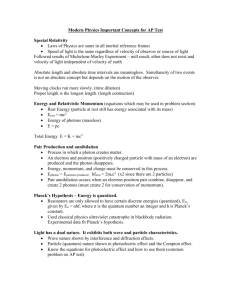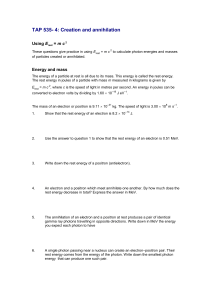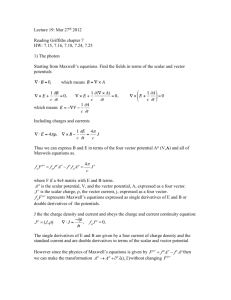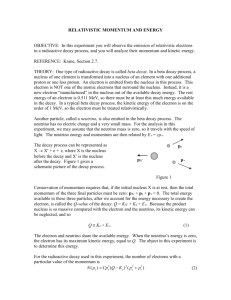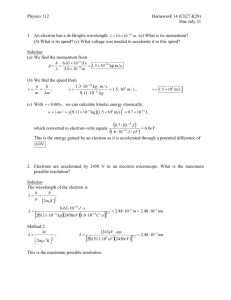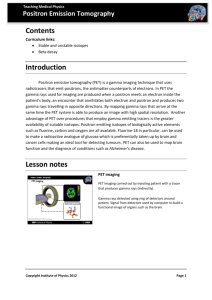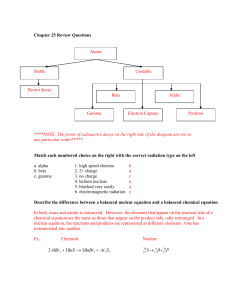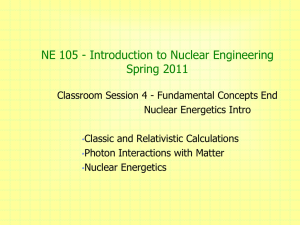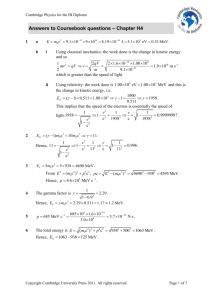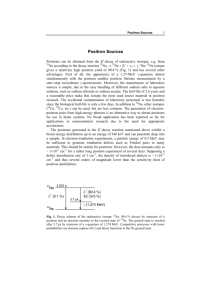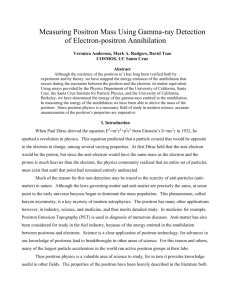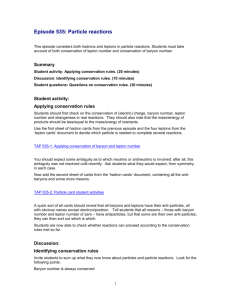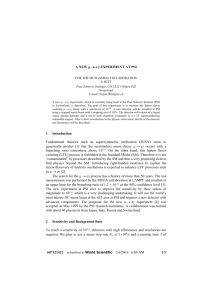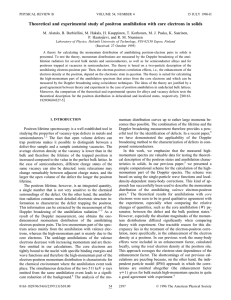Conservation of Energy and Momentum Worksheet
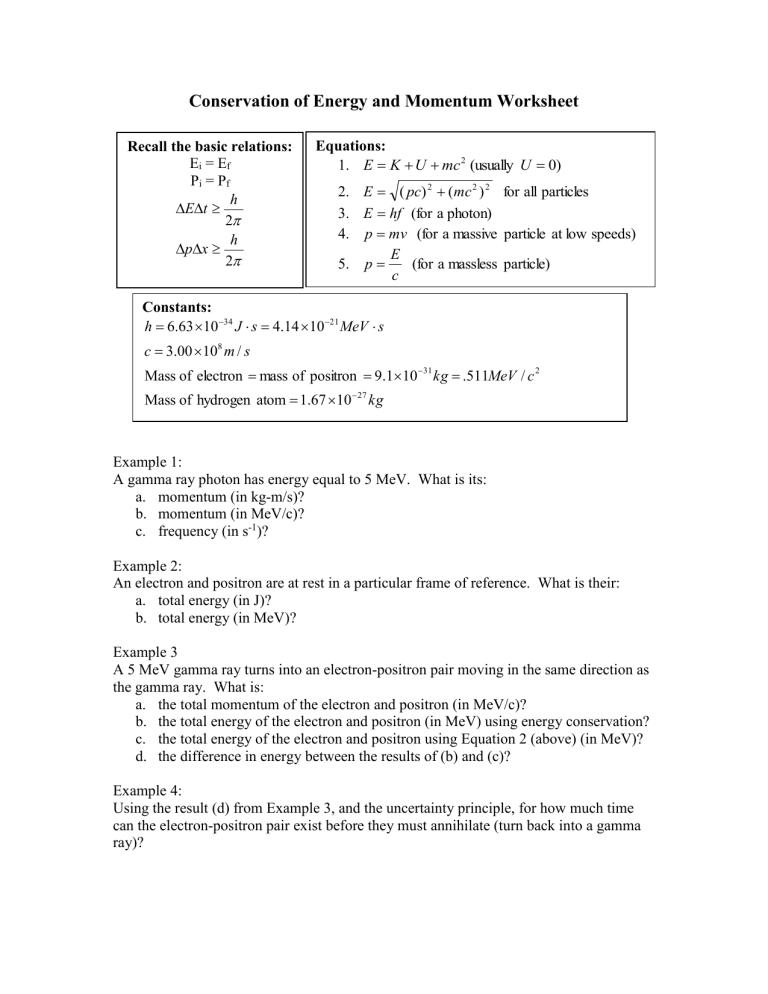
Conservation of Energy and Momentum Worksheet
Recall the basic relations:
E i
= E f
P i
= P f
E
t
p
x
h
2
h
2
Equations:
1.
E
K
U
mc 2 (usually U
0 )
2.
3.
4.
5.
E
E
p
hf
( pc )
2
(for
( mc
2
)
2 a photon) mv (for a massive for all particles particle at low speeds) p
E
(for a massless c particle)
Constants: h
6 .
63
10
34
J
s
4 .
14
10
21
MeV
s c
3 .
00
10
8 m / s
Mass of electron
mass of positron
9 .
1
10
31 kg
.
511 MeV / c
2
Mass of hydrogen atom
1 .
67
10
27 kg
Example 1:
A gamma ray photon has energy equal to 5 MeV. What is its: a.
momentum (in kg-m/s)? b.
momentum (in MeV/c)? c.
frequency (in s
-1
)?
Example 2:
An electron and positron are at rest in a particular frame of reference. What is their: a.
total energy (in J)? b.
total energy (in MeV)?
Example 3
A 5 MeV gamma ray turns into an electron-positron pair moving in the same direction as the gamma ray. What is: a.
the total momentum of the electron and positron (in MeV/c)? b.
the total energy of the electron and positron (in MeV) using energy conservation? c.
the total energy of the electron and positron using Equation 2 (above) (in MeV)? d.
the difference in energy between the results of (b) and (c)?
Example 4:
Using the result (d) from Example 3, and the uncertainty principle, for how much time can the electron-positron pair exist before they must annihilate (turn back into a gamma ray)?
Example 5:
Suppose that during the time interval found in Example 4, the pair interacts with a nucleus of a hydrogen atom as shown below.
+
-
H
A gamma ray turns into an electron-positron pair.
A hydrogen nucleus sits off in the distance.
+
H
The electron-positron pair interact with the nucleus.
- a.
In what direction will the nucleus move? b.
In spite of the fact that the nucleus will move, its kinetic energy is much less than its mass energy (mc 2 >> pc) and can be ignored in Equation 2. Why do you think this is?
Example 6 (a bit more challenging!) a.
Using momentum conservation, determine an expression for the momentum of the electron after it collides with the nucleus (leaving the momentum of the nucleus as a variable). Assume that the electron and the positron have the same momentum. b.
Using energy conservation and Equation 2, determine the momentum of the nucleus. c.
Can the positron and electron now exist independently for a long (measureable) time interval? Explain.
Example 7:
In Example 6, it was assumed that the electron and positron have the same momentum.
What is wrong with this assumption? Refer to the photograph below for help.
Incoming photons e
e
+ e
e e
+
-
LAWRENCE BERKELEY NATIONAL
LABORATORY/ SCIENCE PHOTO LIBRARY
Symmetrical production of matter & antimatter in two electron-positron
pairs. In this bubble chamber photograph, two invisible gamma-ray photons enter from the top & each produce a pair of electrons & positrons
(or anti-electrons). In the upper pair, the incoming photon also displaces an atomic electron, which shoots off towards bottom left. In the lower pair, all the photon's energy goes into the production of the electron & positron; being more energetic, this pair curves less in the bubble chamber's magnetic field than the upper pair, which form the characteristic spiral tracks of low-energy electrons & positrons.

